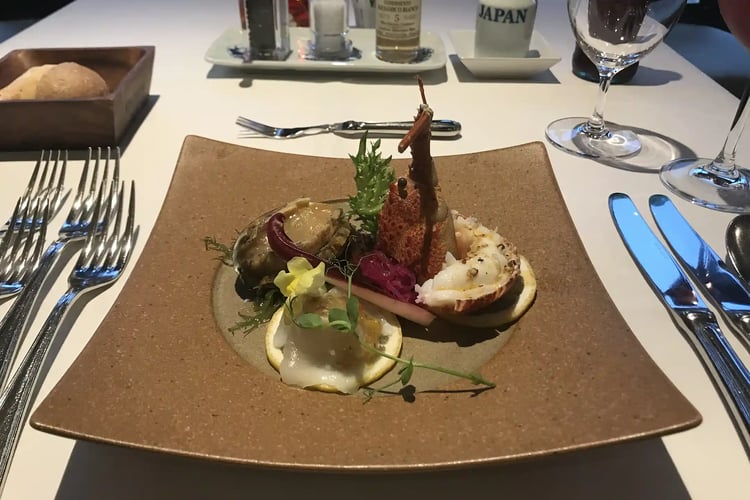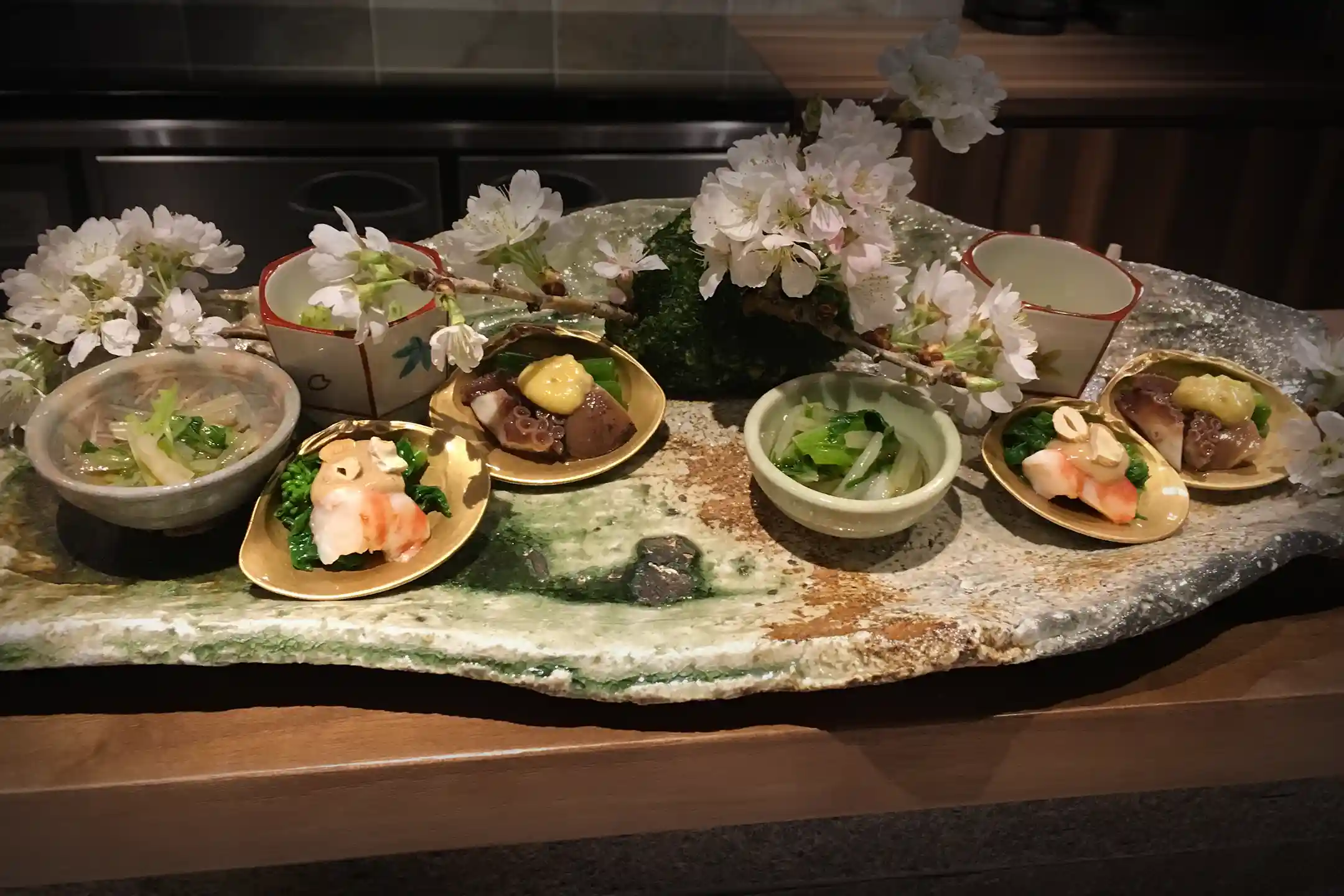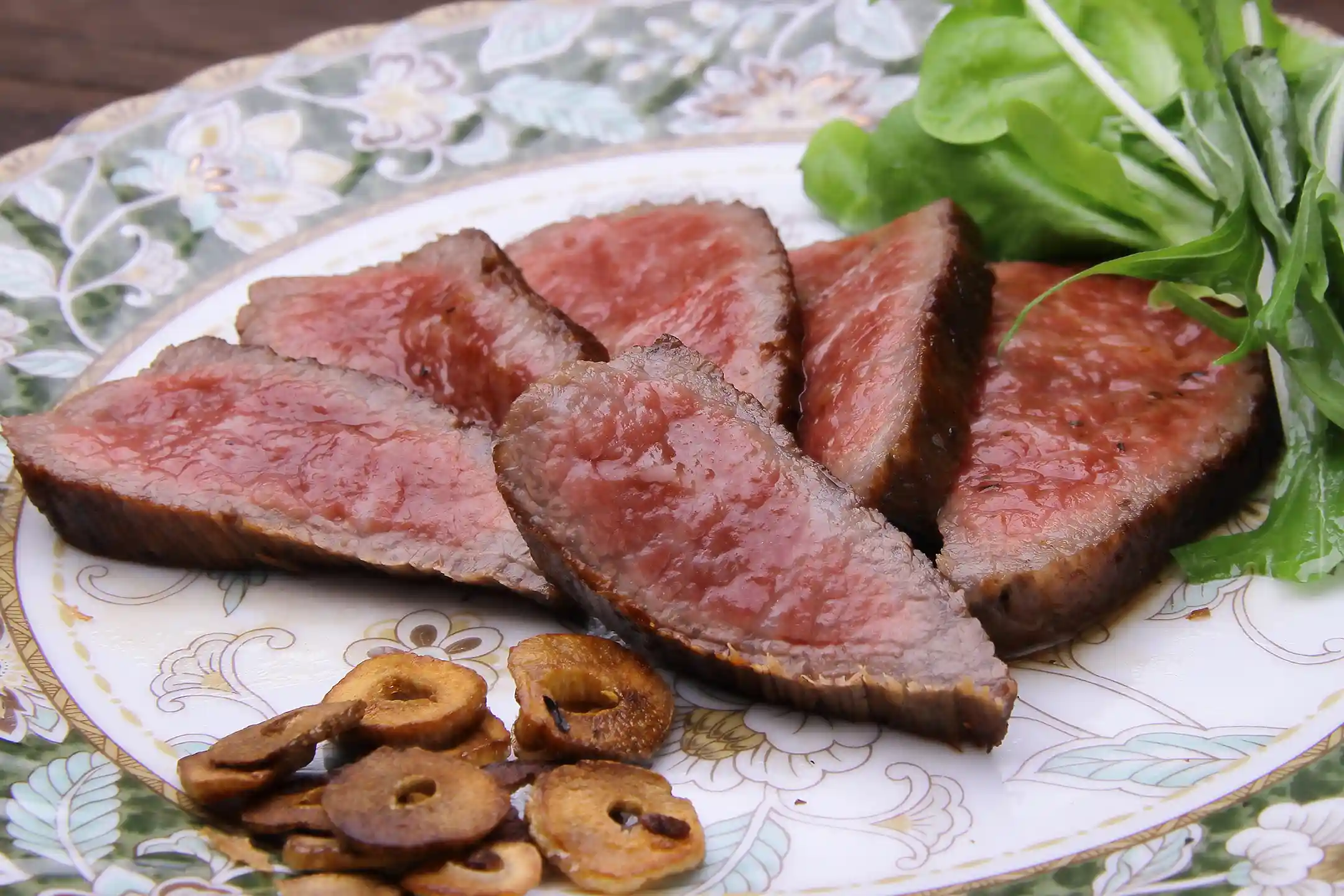The neighborhood surrounding Kyoto Station is a one‑of‑a‑kind stage where the timeless atmosphere of the ancient capital blends seamlessly with futuristic architecture. From the moment you step off the Shinkansen, you’re wrapped in streetscapes that fuse centuries‑old tradition with a decidedly modern energy.
Unsurprisingly, the area’s culinary scene is just as captivating: everything from centuries‑old ryōtei (traditional dining houses) to trail‑blazing contemporary kitchens invites you to savor Kyoto’s many layers of taste.
If you arrive from the West, you may find the delicacy of Japanese cuisine and the meticulous spirit of omotenashi refreshingly new. At the same time, local restaurateurs have grown ever more thoughtful about how they appear through international eyes, constantly refining ways to welcome overseas guests.
It’s precisely because these two perspectives intersect that dining around Kyoto Station feels “perfect for both the first and the final chapter” of your journey.
Kyoto Station Area Highlights and Tips for Choosing Restaurants
More than just a transit hub, the Kyoto Station district concentrates historic landmarks, cultural facilities, and sleek commercial complexes—an emblem of “today’s Kyoto.” With bullet trains, local lines, and airport limousine buses all converging here, even first‑time visitors or short‑stay travelers can navigate the city with ease.
World Heritage Sites such as Higashi Hongan‑ji and Nishi Hongan‑ji lie within walking distance, allowing you to immerse yourself in Japanese history and spiritual culture almost immediately after arrival.
From a Western viewpoint, the idea that “layers of deep history sit right outside the station” can feel unusual; many global cities cluster pure business functions around their rail hubs. Kyoto, by contrast, has long woven heritage into daily life, so multiple cultural assets coexist side by side. Keep the following three points in mind as you pick your perfect restaurant.

Enjoying the Fusion of History and Culture
Kyoto’s long culinary lineage shows in seasonal ingredients prepared with precision and plated with an eye for beauty. Around the station, you’ll find satellite branches of venerable establishments that have endured for centuries, offering the thrill of tradition overlaid with modern pleasure (*1, *2). Worried that high‑end Japanese dining feels intimidating? Multilingual menus and English‑speaking staff are becoming the norm, so you can settle in with confidence.
Rather than labeling the presentation merely “unusual,” try tuning into the craft behind each dish—the choice of produce, the seasons hidden in the arrangement, the silent dialogue between chef and nature. Japan’s devotion to seasonal sensibilities may not mirror practices back home, yet it opens doors to fresh discoveries.
At the same time, Kyoto’s chefs now tailor flavors and formats for global palates. That spirit of mutual respect often reveals the truest taste of Kyoto.
Refined Spaces and Service
Many restaurants near the station sit in the upper price range and deliver polished spaces with attentive service. Panoramic views from the station building’s upper floors, serene hotel dining rooms, and interiors that weave traditional motifs into modern design all heighten the sense of occasion.
Japanese hospitality often centers on anticipating a guest’s needs without overt display—subtly different from the friendly directness prized in the West. Knowing this distinction lets you appreciate the invisible care and the almost perfect timing with which each plate appears. Numerous venues also offer private rooms, ideal for celebrating with close friends or family.
Commitment to Sustainability and Cutting‑Edge Technology
While Kyoto guards its past, it eagerly embraces new technology and social responsibility. Restaurants lead the charge with farm‑to‑table sourcing and food‑loss reduction programs (*3, *4). By highlighting produce from surrounding farms and fisheries, they limit transport emissions and bring fresher flavors to your plate—an approach that nourishes both planet and palate.

If you assumed Japanese tradition stands frozen in time, a stroll around the station proves otherwise. Expect kitchens equipped with state‑of‑the‑art gear and even a rotating panoramic restaurant that delivers 360‑degree city views (*5). The coexistence of heritage and tech reframes Kyoto as something richer than a static “mystical past,” showing how mutual respect sparks a vibrant food culture.
Popular Restaurants around Kyoto Station by Genre
Kyoto Station is a treasure trove of dining, spanning every imaginable style. We highlight three categories—“Heritage Washoku,” “Modern Western & Cafés,” and “Kyoto‑Style Sweets”—focusing on venues with stellar reviews. Peak seasons draw heavy crowds and many spots require reservations, so plan ahead for a smooth experience.

Heritage Washoku: Savoring Tradition
When you think “Kyoto,” delicate Japanese cuisine springs to mind. Kyo‑ryōri elevates local vegetables and seafood into beautifully arranged dishes adored by visitors and residents alike—often chosen for celebrations. Here are two storied restaurants near the station where history and prestige shine.
Kyoto Wakuden
Tracing its roots to a 1925 ryokan, Wakuden delivers refined seasonal kaiseki from counter seats overlooking Kyoto Tower. Despite its heritage, the interior feels modern and welcoming. While centuries of knowledge echo through the ceramics and plating, the cooking itself stays open to fresh ideas—traditional yet never ossified (*1).
Kyo‑Kaiseki Minokichi Takeshigero (Hotel Granvia Kyoto)
A sister to a ryōtei founded over 300 years ago, this branch pairs unbeatable station access with dignified kaiseki. Water and dashi culture lie at the heart of each elegantly restrained dish. Slip into the tea‑house‑like calm, forget the bustle outside, and immerse yourself in flavors shaped by Kyoto’s history and nature (*2).
Modern Western & Cafés: Creative Fusion
Kyoto Station also brims with eateries that weave Japanese elements into Western cooking and café culture. By marrying techniques and design thinking from both worlds, they showcase “the new value born where cultures meet.”
French Dining Top of Kyoto (RIHGA Royal Hotel Kyoto)
Kyoto’s only revolving restaurant slowly reveals a 360‑degree city panorama. Though French in style, the kitchen spotlights local beef, kyō‑yasai (Kyoto heirloom vegetables), and aggressive food‑waste reduction (*3). If you cherish sourcing local while embracing global flair, you’ll feel right at home here—whether at a dazzling dinner or a sunlit lunch.
Bistro KIZANO
A cozy bistro steps from Higashi Hongan‑ji, KIZANO bases its menu on French technique yet infuses dashi, miso, and other Japanese notes for unique creations (*4). The team favors “small‑batch, carefully finished” dishes that coax out each ingredient’s natural aroma—especially the vegetables procured from nearby farms, perfect for diners who crave plant‑forward depth.

Kyoto‑Style Sweets & Dessert Parlors
Between sightseeing stops—or to finish a meal—nothing beats a charming sweet shop. Kyoto brims with delights featuring matcha and roasted hojicha, ensuring you never tire of Japanese flavors. Even if you’re new to matcha’s subtle bitterness, pairings with cream or sweet bean paste reveal a surprisingly captivating balance.
Nakamura Tokichi Honten, Kyoto Station Branch
Operating since 1854, this veteran tea purveyor runs a wagashi café inside the station building—ideal for a quick detour. Matcha parfaits, hojicha jelly… every item lets you taste tea’s nature at full tilt (*5). Japanese tea culture is about more than sipping leaves; it embodies hospitality and conversation. One spoonful of these desserts and you’ll feel tradition and contemporary playfulness twine together.
Food Culture & Learning: Nuggets to Spark Curiosity

Japanese gastronomy is often viewed as a set of “distinct rituals” or “fixed forms.” Yet beneath those patterns lie spirituality, regional identity, and even traces of Zen and syncretic beliefs, all layered through history.
Savoring the Stories Behind Food and History
Since “Washoku” was inscribed on UNESCO’s Intangible Cultural Heritage list in 2013 (*1), global interest has surged. Kyoto’s kaiseki, in particular, weaves seasonality, aesthetics, and a sense of calm into its own tapestry (*2). Though it parallels Western coursed meals, its aim isn’t to highlight a single main—rather, to “mirror nature and the seasons” across the entire progression.
Take yuba (tofu skin), born from Buddhist temple cuisine: stripped of excess yet profoundly nourishing (*2). Japanese culinary culture prizes patience over mere efficiency, and reveres nature itself—a perspective that may surprise you yet offers powerful insight. Restaurants such as “Kizahashi” in a station‑side hotel and 300‑year‑old “Minokichi” champion that ethos while embracing fresh challenges (*3, *4).
Linking with Nearby Spots for Art & Architecture
Kyoto Station’s glass‑and‑steel futurism houses grand staircases and sky corridors that subtly echo the walkways of a traditional strolling garden (*5). Many visitors gasp, “Kyoto Station is bigger and more modern than I expected!”—but learning the spatial philosophy beneath the surface reveals depth beyond mere contemporary design.
At dusk, the staircase illuminates—a magical pre‑ or post‑dinner stroll. Venture a little farther and you’ll reach Nishi Hongan‑ji, Sanjūsangen‑dō, or the Kyoto National Museum, each rich in art and heritage.
Pairing dining with these sights elevates your experience from enjoyable to transformative, nurturing empathy rather than viewing Japan as a distant “other.” Kyoto itself benefits too; welcoming diverse guests sparks new self‑discoveries and possibilities. Rather than passing history one‑directionally, the city fosters exchanges rooted in mutual respect—a blueprint for vibrant tourism today.

Conclusion — Making the Most of Kyoto Station Restaurants
Dining around Kyoto Station mirrors Kyoto itself: a fusion of legacy and innovation. Step into a classic Kyo‑ryōri house and you’ll taste flavors steeped in history; venture into modern Western cafés and you’ll meet exhilarating cross‑cultural creations. Tea‑centric sweets offer a gentle pause and an entrée into Japanese hospitality.
More restaurants now adopt farm‑to‑table sourcing and tackle food waste, not only easing environmental burdens but also amplifying each ingredient’s inherent freshness. In a city that draws the world, such attitudes craft dining spaces where “we learn from one another.”
Modern architecture stands shoulder to shoulder with venerable temples and museums, so weaving a short stroll between courses multiplies the richness of your trip. You’ll feel Japan’s “spiritual depth” while encountering surprises that resonate with your own worldview. Every plate around Kyoto Station paints another vivid stroke in your travel memory. So wander, taste, and let your curiosity guide you—you may just uncover facets of Kyoto you never knew existed.
Author Bio





.webp)
.webp)